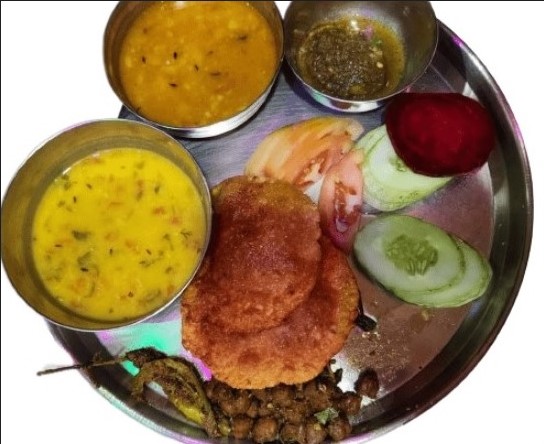Indian cuisine is a symphony of diverse flavors, vibrant colors, and enticing aromas. At its heart lie an array of spices and herbs, such as ginger, garlic, mentha, fenugreek, coriander leaves, and countless others. Beyond their culinary significance, these ingredients are potent contributors to nutrition and health. In the following narrative, we embark on an exploration through the intricate web of Indian dietary culture and nutritional wisdom.
THE POWER OF SPICES
Indian cuisine is renowned for its intricate spice blends, offering a treasure trove of flavors and health benefits. Turmeric, often called “the golden spice,” contains curcumin, a potent anti-inflammatory and antioxidant. Cumin aids digestion and provides iron, while fenugreek is rich in soluble fiber, helping to manage blood sugar levels. Cardamom aids digestion and supports heart health, while cloves offer antimicrobial properties.
GINGER, GARLIC, AND BEYOND
Ginger and garlic, commonly referred to as “adrak” and “lahsun” in Hindi, are fundamental ingredients in Indian cooking. Ginger’s anti-inflammatory properties help soothe digestive discomfort and nausea. Garlic contains allicin, known for its immune-boosting and cardiovascular benefits. Mentha, or mint, provides a refreshing burst of flavor and aids digestion, while fenugreek, or “methi,” is packed with vitamins and minerals.
CORIANDER LEAVES: VERSATILE AND NUTRITIOUS
Coriander leaves, or “dhania,” are ubiquitous in Indian cuisine, serving as both a garnish and a flavor enhancer. These leaves are a source of dietary fiber, vitamins A and K, and various antioxidants. They promote healthy digestion, support bone health, and may even have anti-anxiety properties. A handful of fresh coriander leaves can transform a dish, both nutritionally and gastronomically.
BALANCED AND PLANT-BASED
Indian cuisine places great emphasis on balanced nutrition, often incorporating plant-based ingredients. Lentils and legumes like “dal” provide protein and fiber, while vegetables like spinach and okra are rich in vitamins and minerals. Plant-based oils like mustard oil and coconut oil are used for cooking, offering unique flavors and health benefits.
FLAVORFUL AND NUTRITIOUS SPICE BLENDS
Indian cuisine is renowned for its spice blends, known as “masalas.” Garam masala, for instance, combines warming spices like cinnamon, cardamom, and cloves. These blends not only enhance the taste of dishes but also offer a multitude of health benefits. They can aid digestion, boost metabolism, and provide essential nutrients.
HERBAL REMEDIES AND TEAS
In Indian culture, herbs and spices often double as medicinal remedies. Turmeric milk, made with turmeric and warm milk, is a soothing medicine for colds and inflammation. Herbal teas like “tulsi” (holy basil) and “ajwain” (carom seeds) are used to ease digestive discomfort and promote overall well-being.
CONCLUSION
Indian cuisine is a harmonious fusion of culinary artistry and nutritional wisdom. The use of spices, ginger, garlic, mentha, fenugreek, coriander leaves, and other herbs and ingredients not only elevates flavors but also promotes health and vitality. Throughout history, the enduring bond between food, culture, and well-being has been undeniable. This connection reflects how dietary choices and culinary traditions not only sustain physical health but also define cultural identity and social cohesion. It highlights the great impact of food on the holistic well-being of individuals and societies across generations.
